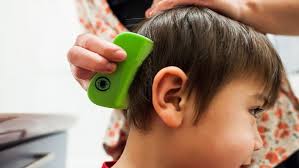
Types of Birth Injuries
Birth injuries can range from mild to severe and may include conditions such as cerebral palsy, brachial plexus injuries, and fractures. These injuries can affect a child’s physical and cognitive development and may require long-term medical care.
Common Causes and Risk Factors
Birth injuries can have severe consequences and may result from various factors, including medical negligence, prolonged labor, and maternal health conditions. Identifying risk factors such as pre-existing maternal health issues or complications during delivery is crucial for prevention and management.
The Role of Early Diagnosis
Early diagnosis is essential for the effective management of birth injuries. It allows for timely medical and therapeutic interventions, which can significantly improve outcomes. Families benefit from multidisciplinary support, including pediatricians, therapists, and counselors, to address the diverse needs of the child.
Medical and Therapeutic Interventions
Navigating Healthcare Systems
Navigating healthcare systems can be a daunting task for parents of children with conditions like birth injuries. It is essential to understand the various healthcare providers, insurance policies, and the steps required to access necessary treatments and support. Parents should:
- Familiarize themselves with their health insurance coverage and benefits
- Identify a primary care physician and specialists for their child
- Learn about the referral process for therapies and specialist appointments
- Keep organized records of medical documents and communications
Therapies for Physical Development
Therapies for physical development are crucial for children with birth injuries. These may include physical therapy, occupational therapy, and speech-language therapy, depending on the child’s specific needs. Such therapies aim to:
- Enhance motor skills and physical strength
- Improve coordination and balance
- Support communication and language development
- Foster independence in daily activities
Supporting Cognitive and Emotional Growth
Supporting a child’s cognitive and emotional growth is as important as addressing physical challenges. Early intervention programs and specialized educational services can provide significant benefits. Parents should seek out resources that:
- Stimulate cognitive development and learning
- Encourage social interaction and emotional well-being
- Offer counseling or psychological services when needed
- Provide family education to better understand and support the child’s needs
Legal Considerations and Advocacy
Knowing Your Child’s Rights
Parents of children with birth injuries must be well-informed about the rights that protect their children. These rights include access to appropriate medical care, education, and accommodations. It’s essential to understand the legislation, such as the Americans with Disabilities Act (ADA), which safeguards these rights and ensures equal opportunities.
Seeking Legal Counsel
When navigating the complex terrain of birth injury, seeking legal counsel can be crucial. A lawyer specializing in this field can offer guidance on potential medical malpractice claims, help secure compensation for medical expenses, and ensure that a child’s rights are upheld.
Advocating for Better Care and Services
Advocacy is a powerful tool for parents. It involves engaging with healthcare providers, educators, and policymakers to improve care and services. Organizations like the March of Dimes support this endeavor by providing resources and encouraging the sharing of birth stories as a form of healing.
Family Dynamics and Support Systems
Raising a child with a birth injury can significantly affect family relationships. Parents may experience a range of emotions, from guilt and grief to determination and hope. Siblings might feel neglected or develop a sense of responsibility beyond their years. It’s crucial for families to openly communicate their feelings and seek external support when needed.
- Open communication within the family
- External support for emotional processing
- Professional counseling if necessary
The Impact on Family Relationships
The arrival of a child with special needs can alter the family equilibrium. Parents often find themselves juggling medical appointments, therapy sessions, and the daily demands of caregiving, which can strain marital relationships. Siblings may also require attention to address their feelings and ensure they don’t feel overshadowed by the needs of the child with a birth injury.
- Prioritize family time
- Acknowledge each family member’s needs
- Foster an inclusive family environment
Building a Supportive Community
A strong support network is invaluable for families navigating the complexities of raising a child with a birth injury. This community can include relatives, friends, other parents of children with disabilities, and professionals. Such networks provide emotional support, practical advice, and a sense of belonging.
- Connect with support groups
- Engage with online communities
- Participate in local events and workshops
Self-Care for Parents and Siblings
Self-care is often overlooked but is essential for the well-being of parents and siblings. Taking time for personal health, hobbies, and relaxation can replenish the energy needed to provide care. Encouraging siblings to pursue their interests and friendships is equally important for their development and happiness.
- Schedule regular self-care activities
- Encourage individual hobbies and interests
- Maintain social connections outside the caregiving role
Educational Planning and Inclusion
Early Childhood Education Programs
For children with birth injuries, early childhood education programs can be a critical component of their development. These programs should be tailored to meet the individual needs of the child, incorporating therapeutic elements as necessary. Parents should look for programs that:
- Offer specialized curricula
- Have trained staff with experience in special education
- Provide a supportive and inclusive environment
Inclusive Education Strategies
Inclusive education is essential for children with birth injuries to ensure they receive the same learning opportunities as their peers. Strategies for inclusion may involve:
- Classroom modifications
- Individualized Education Plans (IEPs)
- Collaboration between educators, therapists, and families
Preparing for School Transitions
Transitions can be challenging for any child, but especially so for those with birth injuries. To facilitate a smoother transition:
- Start planning early
- Engage with future educators and support staff
- Create a detailed transition plan that includes accommodations and support services
By focusing on these areas, parents can help their children with birth injuries to thrive in educational settings, laying the groundwork for lifelong learning and development.






